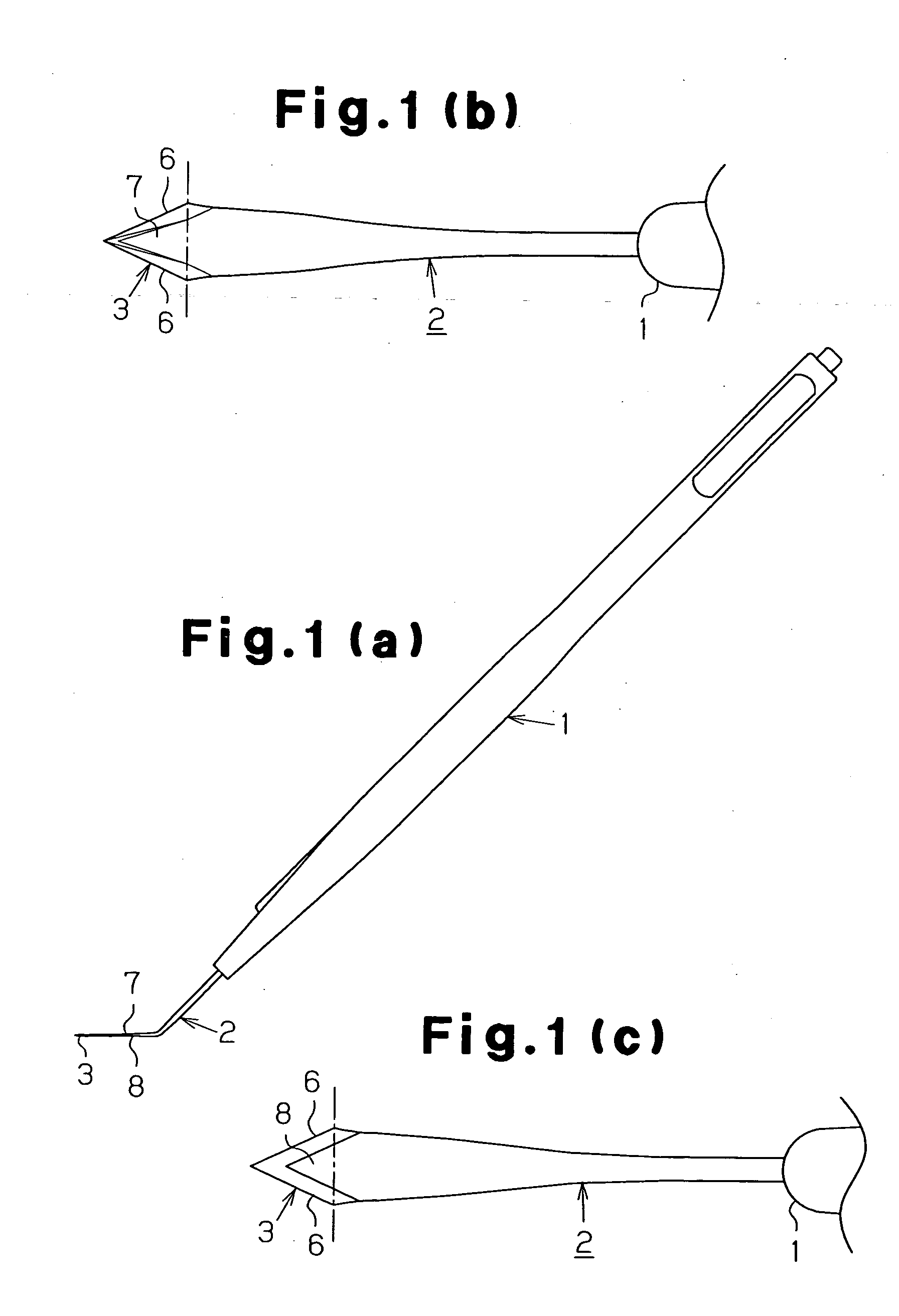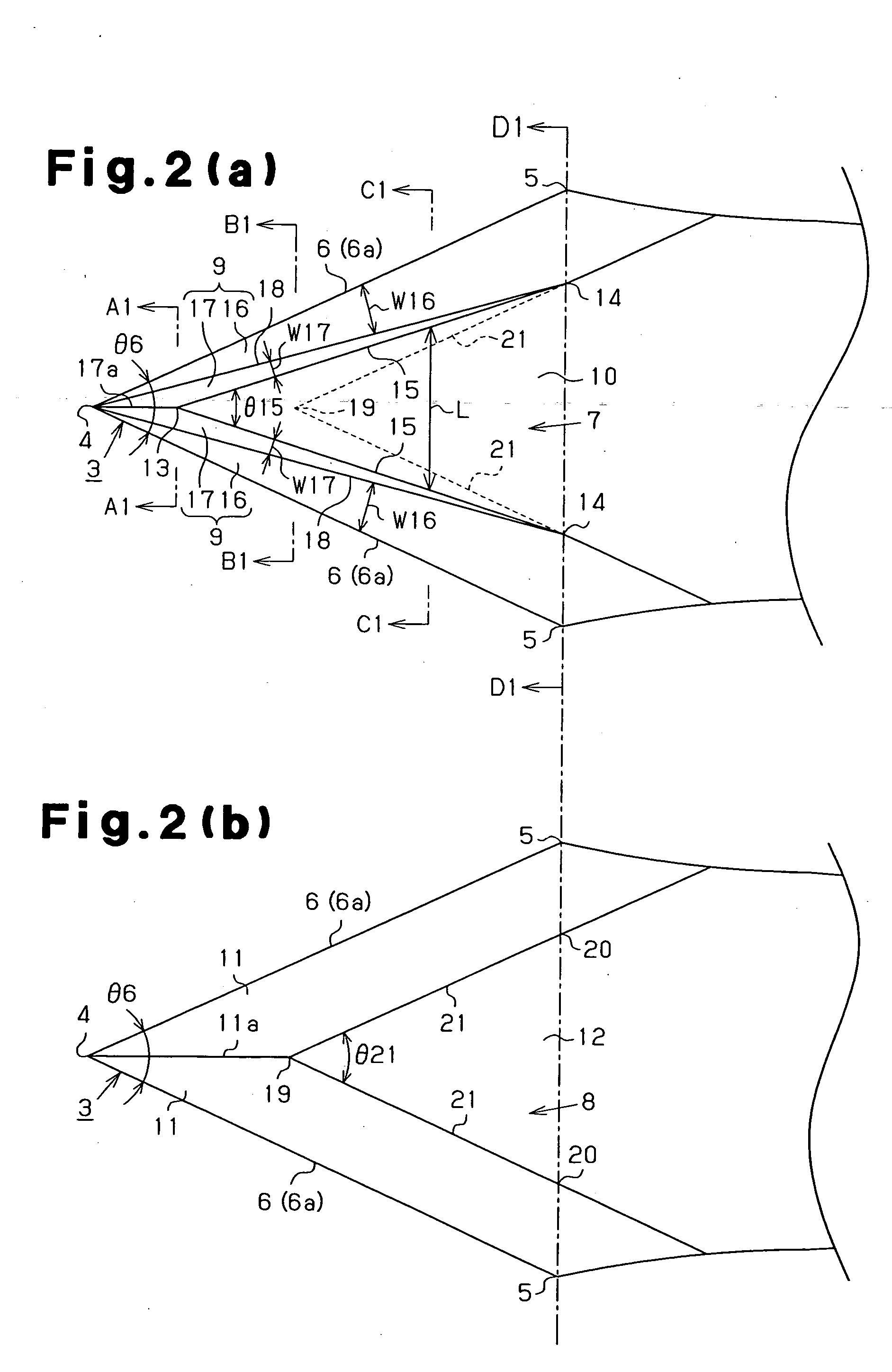Medical knife
- Summary
- Abstract
- Description
- Claims
- Application Information
AI Technical Summary
Benefits of technology
Problems solved by technology
Method used
Image
Examples
Embodiment Construction
[0034] A medical knife according to a first embodiment of the present invention will be described with reference to FIGS. 1(a) to 4(d).
[0035] As illustrated in FIGS. 1(a) to 1(c), the medical knife is used surgically for dissecting eye tissue and includes a synthetic resin handle 1 and a metal plate 2. The plate 2 is attached to the handle 1 and is bent. A blade 3 is formed at a distal end of the plate 2. The plate 2 includes a front side 7 (a first side) and a rear side 8 (a second side). As shown in FIGS. 2(a) and 2(b), the front side 7 and the rear side 8 are defined between a pair of outer end lines 6 in an opposing manner. Each of the outer end lines 6 extends from a cutting point 4 (the distal end) to a corresponding one of proximal ends 5. A cutting edge 6a is formed along the entire portion of each outer end line 6. An angle θ6 defined by the opposing outer end lines 6 with respect to the cutting point 4 at each of the sides 7, 8 is not less than 15 degrees but not more tha...
PUM
 Login to View More
Login to View More Abstract
Description
Claims
Application Information
 Login to View More
Login to View More - R&D
- Intellectual Property
- Life Sciences
- Materials
- Tech Scout
- Unparalleled Data Quality
- Higher Quality Content
- 60% Fewer Hallucinations
Browse by: Latest US Patents, China's latest patents, Technical Efficacy Thesaurus, Application Domain, Technology Topic, Popular Technical Reports.
© 2025 PatSnap. All rights reserved.Legal|Privacy policy|Modern Slavery Act Transparency Statement|Sitemap|About US| Contact US: help@patsnap.com



